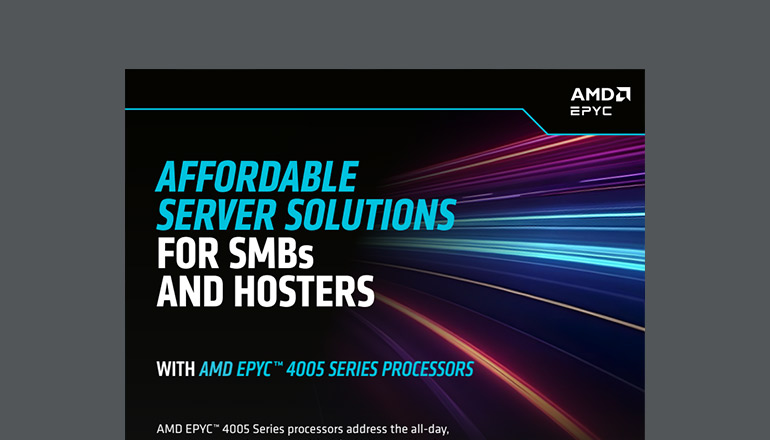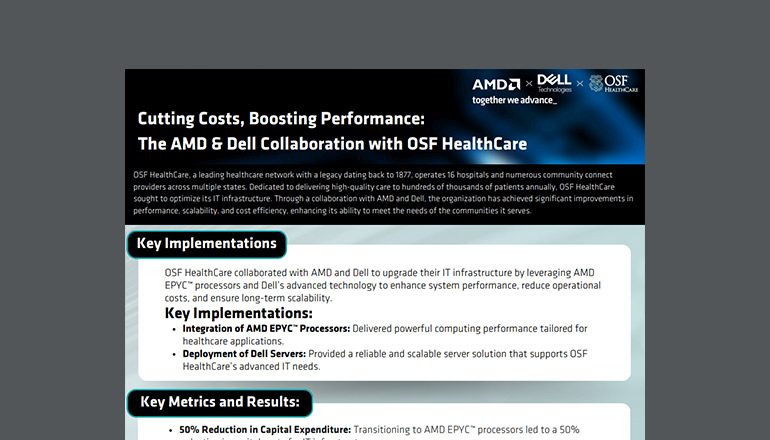Tech Journal Should You Outsource IT Management?
By Phil O'Konski / 19 Mar 2020 / Topics: IT optimization Data center

Finding IT success with a trusted partner
IT leaders are responsible for driving improved productivity and efficiency within their organizations. To do so, they must navigate an ever-shifting landscape of priorities that directly impact the way their organizations are run. For many businesses, the challenge of managing these priorities can be daunting. A common approach is to shift some IT responsibilities to an IT management provider.
The path to successful IT outsourcing begins with asking the right questions. These questions may include:
- How do I leverage a partner to give me the visibility and the analysis to optimize my environment?
- How do I make sure my partner is familiar with my people and processes?
- How do I transfer ownership of my operations to free up my resources for the business?
- How do I know I am maximizing the value of my operational partner?
By answering these questions, you frame the operational responsibilities and objectives of your partnership. This is an important step to make sure you start off on the right footing.
Driving operational improvement through innovation
Along with the progress in technology is the growing task list for IT teams. Hence, companies are growing more dependent on digital innovation initiatives to achieve business outcomes internally and externally. According to the 2019 Insight Intelligent Technology™ Index:
- Innovation is seen as a driver of efficiency, with 52% of IT decision-makers reporting that the primary objectives for digital innovation within their organizations are improving operations and business procedures. For companies with limited IT resources, this can be a daunting challenge.
- Enhancing the customer experience and customer relationships is a close second on the list of top innovation objectives, according to 47% of IT professionals. The full list of objective include:
Improve our operations and business processes.
52%
Improve customer experience and customer relationships.
47%
Make our employees more productive.
39%
Develop new products and/or services.
38%
Develop or improve relationships with partners.
34%
Transformation is a process, not a destination.
Internal and external drivers for transformation are ever-changing; IT teams working on transformation initiatives need to be prepared for iterative approaches and continuous delivery. Few organizations have enough internal IT staff to manage transformation initiatives alone, and those that do will have a long road ahead of them.
According to a report by Nominet:
- Nearly all (93%) CISOs, CTOs and CIOs surveyed say their company is either currently engaged in, or planning to engage in, a digital transformation project. However, only 7% say they have a working transformation strategy, while 22% are implementing one and 48% are developing one.
- Growth opportunities in new markets, evolving customer and employee behaviors and preferences, and increased competitive pressures are reported as the top drivers of transformation.
- There are significant considerations on the minds of IT leaders today. Those surveyed are most concerned with cybersecurity threats and inflexible infrastructure impacting their ability to transform the business.
Looking to the future
Enterprise IT organizations face significant challenges, but several managed IT services options exist to help mitigate complications that may arise in everyday operations. While most organizations might recognize that they lack the resources, knowledge or staff, they don’t always know how to get from where they are now to where they need to be.
What’s the best path to take? What’s the best way to manage risk, leverage the resources you already have and balance your day-to-day operations — all while trying to make progress toward digital transformation?
Based on the field experiences shared here, managed IT services could offer one answer to this equation. Where you deploy managed IT services, however, can vary greatly for each organization. This might depend, for instance, on where you experience your most significant IT pain. It could involve:
- Outsourcing and automating network operations, system monitoring and patching
- Augmenting local IT security roles with outsourced security resources
- Outsourcing management or monitoring of mixed-environment workloads (i.e., private, public or hybrid cloud)
- Specialized outsourcing of a more narrow or transitory IT function
- Transformation project-specific IT outsourcing
According to Nominet’s report, nearly three-quarters (72%) of IT professionals report that their organization outsources elements of their transformations. This includes firms in the finance and government sectors, which traditionally have been more cautious of outsourcing due to regulatory pressures.
Several managed IT services options
Managed cloud benefits
With managed cloud, you eliminate the need to budget your time, effort and upfront capital expense to purchase your own hardware. Accelerate your move to the cloud, unleashing improved service levels, enhanced ability to meet shifting workload demands and faster revenue growth. Managed cloud integrates with your operations, including change, patch, and systems management, freeing up hours of time for your team to focus on higher-value activities.
Managed services for Azure benefits
With managed services for Azure®, you unlock broad expertise, tools and automation knowledge to achieve speed, scalability and cost savings. Cloud objectives can be realized by unleashing the power of Azure. And a cornerstone of having a managed service model is a self-service, customized Cloud Management Portal (CMP). Through CMP, clients can access, provision, and manage their cloud environment. Clients also gain insights into their environments through delivery of specific cloud metrics, dashboards and cost optimization recommendations.
Managed data center benefits
With managed data center services, you receive proactive care for your critical infrastructure to ensure service uptime. Managed data center puts technical expertise and innovative operational processes to work in your environment. You can rely on consistently high uptimes and performance levels to drive efficiency.
Managed network benefits
No matter the age or complexity of your network, you need to dedicate resources to support it. Managed network offers 24/7/365 network monitoring and incident management for routers/switches, wireless, firewalls/infrastructure and hardware. Maintain connectivity and ensure throughput; deliver reliable services to your users; and gain a dedicated team that’s familiar with your network environment and able to recommend enhancements or remediation when/if needed.
Like any other investment, there’s no guarantee that outsourcing IT management will be the right fit for your organization and secure the biggest return. However, by asking the right questions and identifying your unique operational pain points, managed IT services can reap big dividends and accelerate digital transformation. Many organizations find that working with a managed service provider helps them shift IT focus to higher-level tasks, scale operations, leverage hard-to-find IT skills, drive up efficiency and reduce IT operation costs.
Is it time to leverage IT managed services at your organization? How much of your IT staff time could you free up? Do you need a full-service provider with the resources to not only manage but also design and deploy managed services solutions if required?
Insight’s Cloud + Data Center Transformation solutions and services support clients in offloading burden from their IT organizations, while providing innovation in IT operations. Spanning all areas of the IT environment, our managed services leverage a proven methodology and advanced tools for automation to deliver proactive care in critical areas including cloud, network and security.














